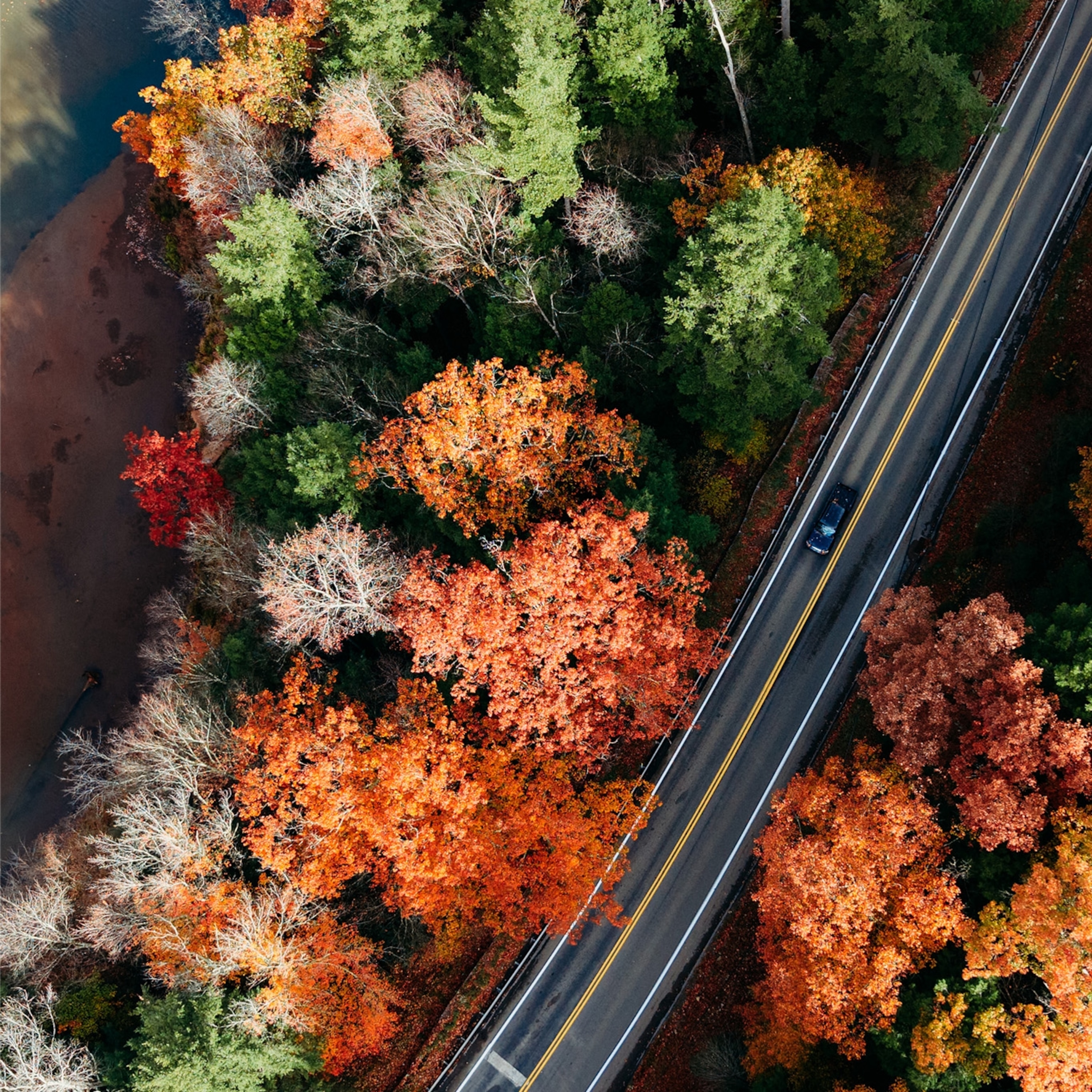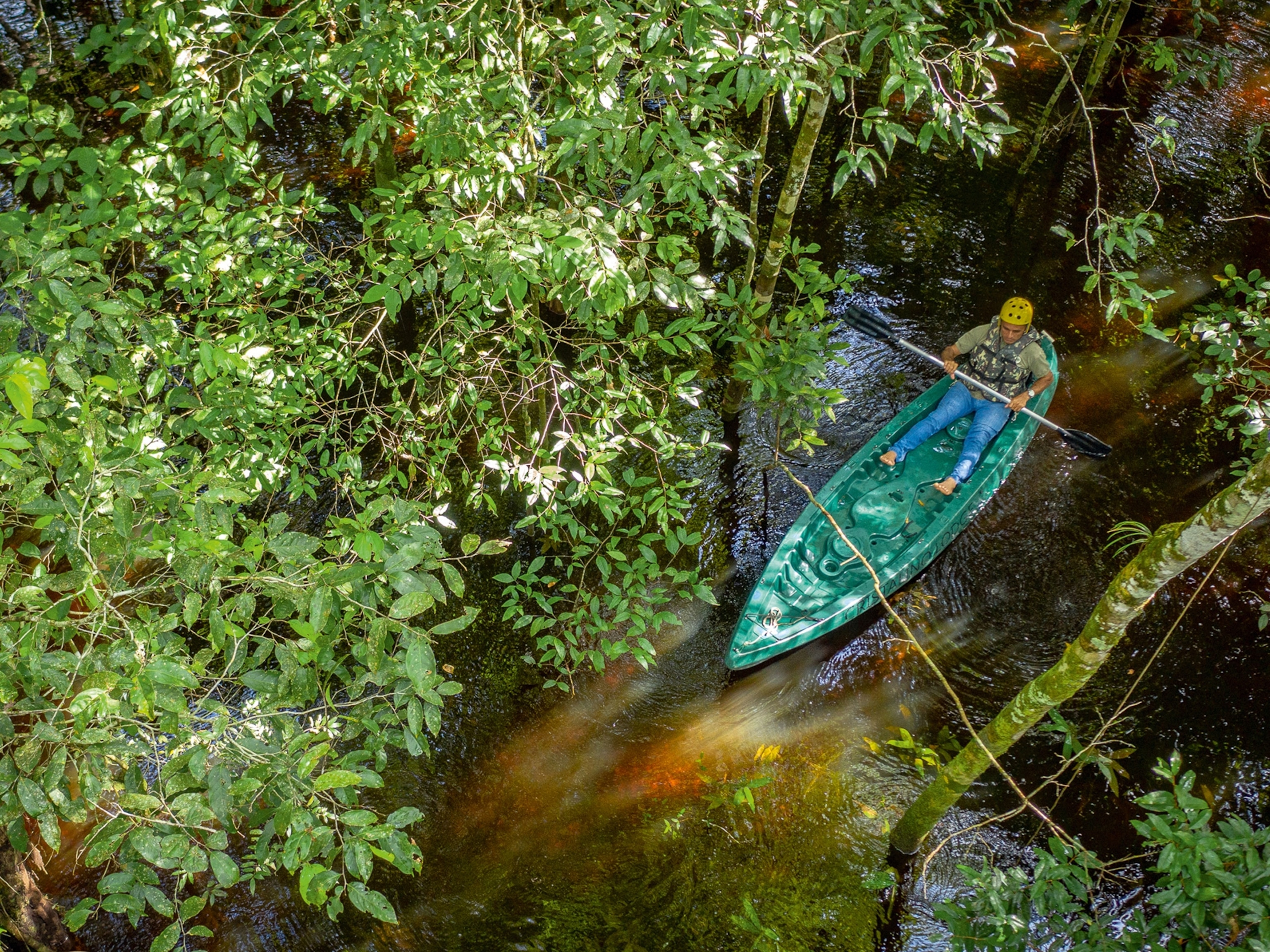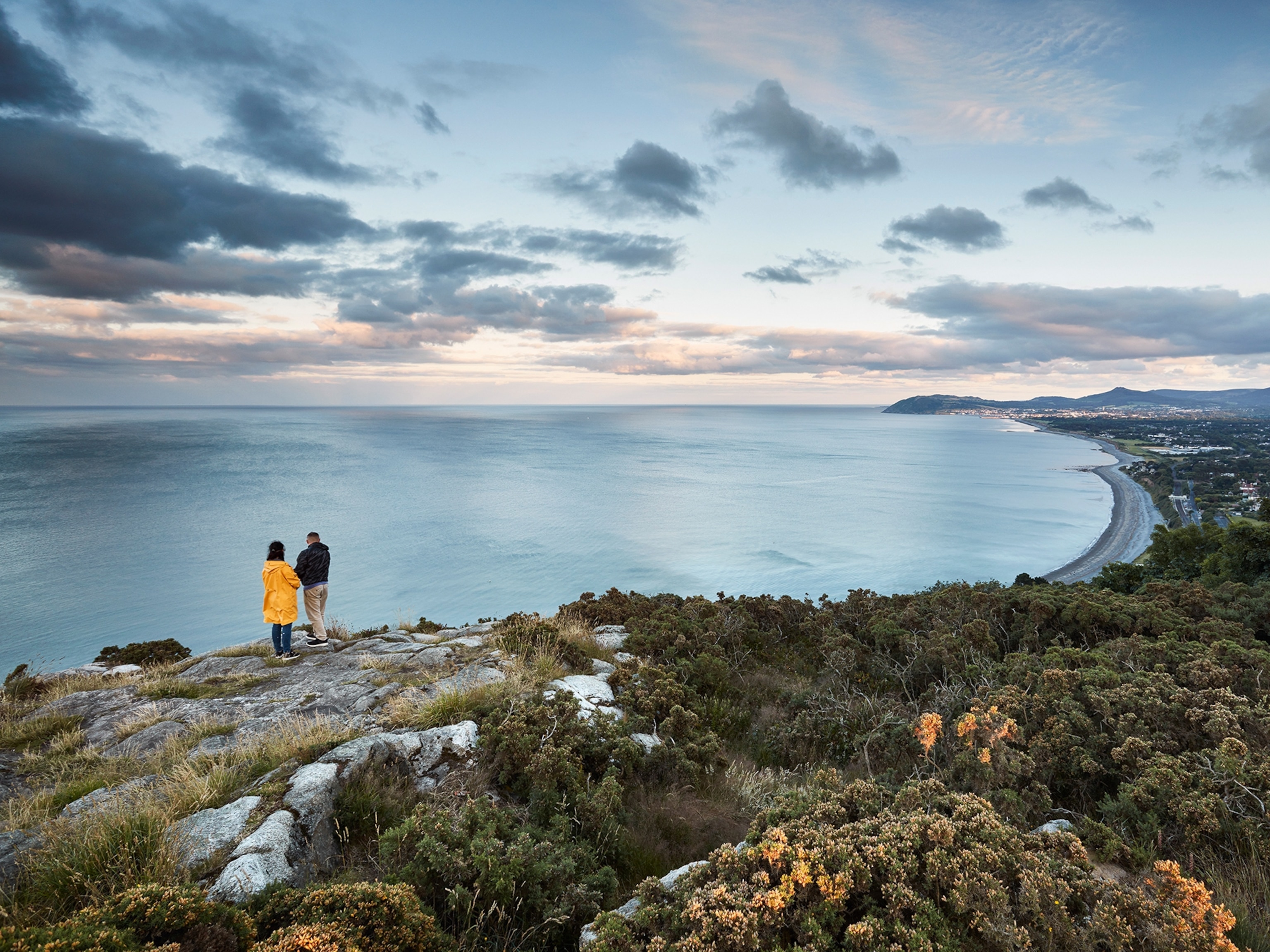Get Wild in the Stunning Nature of Ontario
See how National Geographic Adventurer Erik Boomer disappears into a true wilderness escape, where roads are replaced by waterways in Ontario, Canada.
Completing the first circumnavigation of Ellesmere Island, Canada, in 2012 earned expert kayaker Erik Boomer and his fellow paddler recognition as National Geographic Adventurers of the Year in 2012, but Boomer had more yet to explore: Earning our first ever Hall of Fame award earlier this year, he and two companions kite-skied across the Greenland ice sheet and paddled the first descent of a wild Arctic river.
It’s only fitting that he return to Canada, this time with videographer and white-water kayaker Rush Sturges, to explore where man meets remote wilderness in Ontario's Wabakimi Provincial Park—a place unlike any other he’s ever experienced. “The combination of adventures and thriving First Nations culture created a journey I will never forget,” he says. With Boomer as your river guide, here’s how to dive into the wilds of Wabakimi.
GO PADDLING
There are no roads within Wabakimi Provincial Park, which is perhaps indicative of its character. The park is wild, with big lakes and few people—but it’s known for its rivers, abundant in quantity and rich in life. And it’s known for changing people after just a few days.
With more than 1,200 miles of water routes, Wabakimi is not only a paddler’s paradise but also an idyllic representation of Canada’s canoe culture, a heritage that runs deep here, where canoes are the most common and traditional way of traveling, connecting people to the land and to one another. The park’s name itself is believed to describe the white-water rapids that rule its riverways.
Start on the Allanwater River, an iconic canoe route that personifies Wabakimi. Watch the current, quickening as the water rushes toward Brennan Falls before the river dumps into Granite Lake. But for a real rapid rush, set out on the Ogoki, where Class I waters grow into Class II. Catch your breath before reaching the bottom set—because as it hits, you'll want all your energy on reserve as you approach a Class III wave train.
EXPLORE THE WILDERNESS
In Wabakimi, time travel is a daily reality. The 2.3-million-acre park sits in the province’s northwestern wilderness, explored by an estimated 700 curious backcountry visitors annually, leaving it virtually untouched by industrial activity for thousands of years. That handful of roadless warriors who travel here discover a wonderland of pristine boreal forest—black spruce, jack pine, tamaracks, and lichen-covered granite that provide a herd of some 300 woodland caribou their habitat. Dark, open skies hang over lakes that chatter with walleye and northern pike and brooks that babble with trout. Fish the waters without competition, getting into the groove of your fly-fishing swing or dropping line at Miminiska Lake. Plan ahead to explore sacred Cliff Lake, an imposingly scenic area where 50-foot cliffs loom overhead, covered in pictographs that tell stories from the Anishinaabe’s past.
CONNECT WITH FIRST NATIONS
Humans have inhabited the Wabakimi region for several millennia, and you can trace ancient footsteps along the myriad portage trails that still snake the land. Though today maintained by local First Nations in partnership with Ontario Parks, the paths were made long ago by their ancestors, and the land remains significant to these local communities. Several of the First Nation communities hold ceremonies that you’re welcome to view. Experience a ceremonial smudging ritual at Miminiska Lodge, where you’ll also tour the lake and surrounding area with a First Nations guide, learning about the area’s history while hearing traditional stories about Snake Falls and more.
WHERE TO STAY
Despite being a park with no road access that’s known for its remote and wild adventures, Wabakimi offers certain luxuries that make an extended stay there very welcoming. Full-service lodges with fly-in access are made all the more stunning by their isolation, providing modern travelers with creature comforts like campside coffee, fresh baked goods, and hammocks in position for awe-inspiring stargazing.
The log cabins at Whitewater and Striker’s Point lodges hug either side of Whitewater Lake, the former set alongside the rushing waters of the Ogoki with more rustic amenities and the latter offering daily breakfasts and three-course dinners. Miminiska Lodge sits at the mouth of a natural widening in the Albany River; stays here come with breakfast, a shoreside lunch, a pre-dinner reception complete with small bites and drinks, and a three-course dinner to cap it off. Plus there’s a sauna to unwind from daily casting.
OUTFITTERS
A Canadian outfitter very much entrenched in canoe culture, Wilderness North leads travel by tradition, operating under the belief that the outdoors hold untold healing powers. While a number of outfitters provide excellent excursions, Wilderness North is the only one that also offers lodge-to-lodge services, highlighting the contrast between the outdoor wilderness experience and rustic, full-service accommodations. The organizer offers pre-planned and custom itineraries, all of which are thoughtful in their creation, intent on giving you an incredible wilderness experience.
- National Geographic Expeditions
HIDDEN GEM
Recluse inventor Wendell Beckwith settled on Best Island near the southeast corner of Wabakimi’s Whitewater Lake in 1961, where he’d spend the next two decades alone in the name of research. The precisely designed cabins he built still stand, some of which reflect the ideas he studied here in isolation. His so-called Snail cabin winds like the creature’s shell, reflecting how pi is represented throughout the natural world, an idea he was particularly taken with. The structure defies architectural efficiency, said to produce so much heat in Northern Ontario’s brutally chill winters that Beckwith needed to spend only 10 minutes collecting wood each day. You can access Best Island with an outfitter, like Wilderness North, or by boat.
KNOW BEFORE YOU GO
The gateway to Ontario’s wilderness, Thunder Bay rests on the northwestern shoulder of Lake Superior (the largest freshwater body in North America), with flights from Toronto landing regularly. It’s a natural starting point for any Wabakimi excursion—and getting to the park is part of the adventure. No roads lead into Wabakimi, with access instead made available by VIA Rail (the Canadian national railway), or floatplane. Both Canadian residents and visitors from other countries are required to have Ontario Parks interior camping permits if they wish to camp within Wabakimi Provincial Park. In addition, if you wish to fish while in Ontario you must carry the appropriate fishing license and outdoors card. If traveling with an operator this is typically organized for you ahead of time.
Hannah-Lott Schwartz is a California based travel writer and editor. Follow her on Twitter and Instagram.







